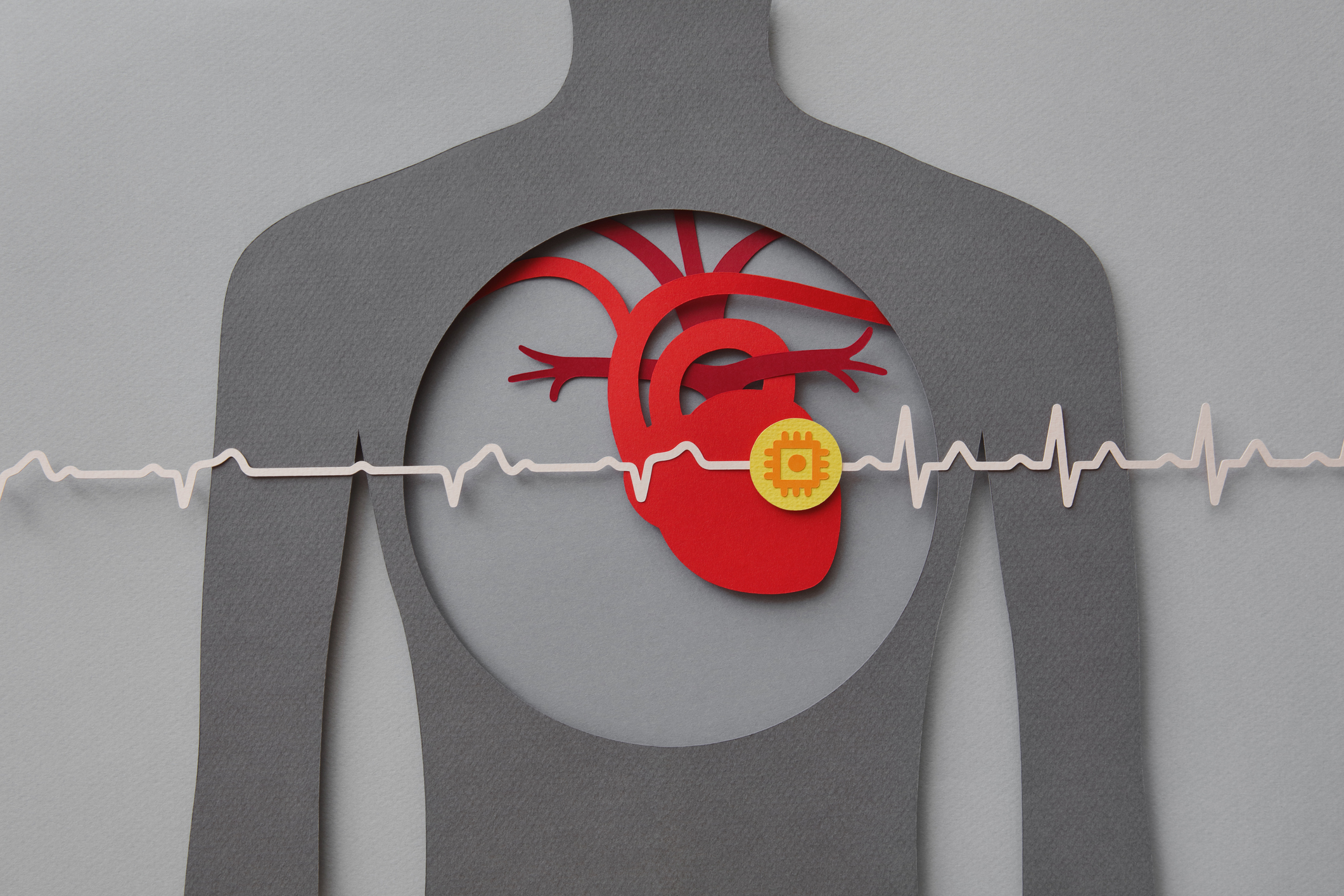The Connection Between Diabetes and Heart Arrhythmias – The human heart beats roughly 3 billion times during the course of an average lifetime. Every single time it beats, blood is drawn into its two upper chambers, held there briefly by a network of valves, and then pumped out forcefully through its two lower chambers. This drawing-and-pumping action ensures that about six liters of freshly oxygenated blood leaves the heart and enters the bloodstream every minute—a volume that can rise to more than 35 liters per minute when someone is exercising.
But none of that can happen unless the heart’s complicated machinery—its assorted valves and muscles and electrical circuitry—is working in harmony. When that harmony breaks down, the heart can pump too fast or too slow, or it can lose coordination among its various chambers. This breakdown is known as an arrhythmia, and it can lead to complications ranging from fatigue or shortness of breath to a heart attack or stroke.
“When we say arrhythmia, we literally mean the heart is out of rhythm,” says Dr. Jonathan Piccini, a cardiologist and arrhythmia specialist at Duke University Medical Center. He compares the heart’s operation to a symphony orchestra. “If someone was playing off the wrong sheet of music or if their instrument were out of tune, that would not be subtle. It would be profoundly disruptive,” he says. “The same is true of a heart arrhythmia.”
Heart arrhythmias are common; up to 5% of the general population has some form of the condition. The most common form, by far, is atrial fibrillation, or “Afib.” This is a type of arrhythmia that arises in the upper chambers of the heart. “Between 60 and 100 beats per minute is normal,” Piccini says. “In Afib, the top regions of the heart are in total chaos and could be beating on the order of 400 to 600 beats per minute.”
According to figures from the U.S. Centers for Disease Control and Prevention (CDC), about one out of every seven strokes is caused by Afib. This and other life-threatening complications have led researchers to scrutinize the most common risk factors for Afib and other arrhythmias. “There’s a super long list of things that can promote or trigger or cause Afib, and one of the big ones is diabetes,” says Piccini, whose work in the Journal of the American College of Cardiology has examined the relationship between the two conditions. By some estimates, people who have Type 2 diabetes are 34% more likely to develop Afib than people without diabetes.
Here, Piccini and other experts explain how diabetes and heart arrhythmias may be connected. They also discuss how both conditions are treated—either alone or in tandem—and how people with diabetes can protect themselves from serious heart complications.
The diabetes-arrhythmia connection
The Framingham Heart Study is one of the most famous and fruitful research efforts ever undertaken. It began in 1948 with 5,000-plus study participants—all from the town of Framingham in Massachusetts—and continues to this day.
The purpose of the study is to track participants’ health and lifestyles over time in order to uncover potential risk factors for heart disease. Thanks in large part to the Framingham Heart Study, researchers recognized that smoking, high blood pressure, too little physical activity, and many other variables could raise a person’s risk for heart disease.
Almost 30 years ago, data from the Framingham Heart Study helped reveal that people with diabetes are at increased risk for Afib. However, the connection between the two conditions has only recently garnered serious research attention. “This is an area of tremendous interest primarily because we have discovered newer classes of medications that, in addition to lowering glucose, can also reduce the risk of heart complications,” says Dr. Jennifer Green, a diabetes and metabolism specialist at Duke who, along with Piccini, has conducted research on diabetes and Afib.
A lot more work is needed to determine exactly why people with diabetes are at increased risk for Afib. “But there does seem to be a cause-and-effect relationship between the two,” she says. One hypothesis is that elevated levels of blood sugar (or glucose), which is a hallmark of diabetes, causes damage to the heart that may result in arrhythmias. “There are things we call advanced glycation end products”—harmful compounds that arise when blood sugar combines with blood proteins or fats—“that we know can be responsible for organ damage,” she explains.
Another hypothesis is that diabetes contributes to the development of high blood pressure (hypertension), which may cause damage to the heart in ways that result in an arrhythmia. “Diabetes affects the blood vessels in ways that make them stiffer and that makes blood pressure rise,” says Dr. Mattias Brunström, a hypertension specialist and physician researcher at Umeå University in Sweden. Roughly two-thirds of adults with diabetes also have hypertension, and people with hypertension are almost twice as likely to develop Afib as people who do not have hypertension.
Yet another possibility is that diabetes-related inflammation may contribute to the development of an arrhythmia. “In people with diabetes, there are both systemic and localized increases in inflammation that, if severe enough and prolonged enough, could increase the risk of arrhythmia,” Green says.
All of these hypotheses could turn out to be accurate. “It’s probably not just one mechanism or one explanation, but several,” she says.
Read More: The 55 Best Foods for People With Diabetes – Blood Sugar
Prevention and treatment
There is good evidence that people who have well-controlled diabetes are much less likely to develop Afib or other types of arrhythmias than people who have poorly controlled diabetes.
“We’ve learned that the higher the glycemic load, the higher the likelihood a person will develop Afib,” Piccini says. Managing glycemic load (keeping blood sugar at a healthy level) is the main purpose of taking medication for diabetes. It’s possible that people who are undergoing treatment for diabetes don’t need to do anything different to lower their risk for an arrhythmia. “For anyone with diabetes, the goal is good glycemic control,” he says. “It’s not clear whether we should be treating them any differently in order to prevent an arrhythmia.”
However, there are some newer types of diabetes drugs that may help lower a person’s odds of developing an arrhythmia. “There’s some evidence that certain classes of diabetes drugs, such as SGLT2 inhibitors, may reduce the risk of atrial arrhythmias,” Green says. There are also some drugs that are aimed specifically at reducing the risks of heart complications in people with diabetes. For example, some work has found that a drug called finerenone may lower the likelihood that someone with diabetes will go on to develop heart complications, including an arrhythmia. “This drug helps counteract inflammation, and may provide a benefit through that process,” she says.
While some of this work is promising, Green notes that more follow-up is needed. “A lot of what’s been published already are analyses of observational data, so looking at outcomes among people receiving the drugs and seeing how they do,” she says. “That information can be helpful, but we need randomized controlled trials to see if these drugs really do reduce risks.”
Piccini echoes her assessment. “There really haven’t been any studies expressly asking, does treatment with one of these lead to better outcomes?” he says. These sorts of studies are in the works, he adds, but we don’t have answers yet. In the meantime, Piccini notes that people with diabetes who are concerned about heart complications, including arrhythmias, should focus on controlling their blood sugar as well as their overall health. That means taking their diabetes medications as their doctor advises, and also trying to eat right, exercise, stop smoking, and maintain a healthy body weight. “Don’t drink to excess, and get plenty of sleep,” Piccini adds.
It might also be helpful for people with diabetes to ask their care provider about medications that have been shown to reduce heart-related complications. “The landscape of treatments to reduce the risk of cardiovascular events in people with Type 2 diabetes has completely altered over the last 10 years,” Green says. “I think it is time for everyone, clinicians in particular, to reassess whether the regimens they are prescribing are the most effective for their patients.” The American Diabetes Association produces guidelines that are updated annually and intended to help diabetes doctors choose the optimal treatments for their patients. “A person with diabetes should ask their doctor whether they are on the guideline-recommended therapy, because unfortunately, many are not,” she adds.
For a person who has been diagnosed with both diabetes and a heart arrhythmia, the situation is much the same. Some drugs have shown promise in treating both conditions, but experts say more work is needed. As Piccini puts it: “If someone has Afib and diabetes, should we be using some medications in preference to others? This is an area where we need more information.”
Setting aside treatments that target both conditions, there are a number of effective ways for doctors to handle an arrhythmia—regardless of whether a person has diabetes. One technique called electrical cardioversion uses low-energy electrical pulses—shocks, basically—to help reset and normalize the heart’s rhythm. The introduction of a pacemaker or other less-invasive procedures can also resolve or reduce the risks of an arrhythmia.
Looking ahead
Almost 9% of American adults have been diagnosed with diabetes. Diabetes is also much more common among children and adolescents today than it was even 20 years ago. Meanwhile, 38% of Americans have prediabetes, which refers to abnormally high blood levels that may soon progress to diabetes. All of these figures are at historic highs, and they’re expected to increase in the future. As a result, a lot of research is now looking at ways to not only prevent and treat diabetes, but to manage associated risks or complications—including arrhythmias.
The good news is that there are many promising medications in the research pipeline. Medical science’s ability to not only control diabetes but also to reduce a person’s risks for heart-related complications is getting stronger all the time. As the work in this area intensifies, breakthroughs are sure to follow. In the meantime, there’s good evidence that controlling one’s diabetes using a mixture of existing medications and healthy lifestyle practices can prevent heart complications, including arrhythmias. “Right now,” Piccini says, “we already have so many ways to treat these conditions, and our understanding is only going to get better.”










